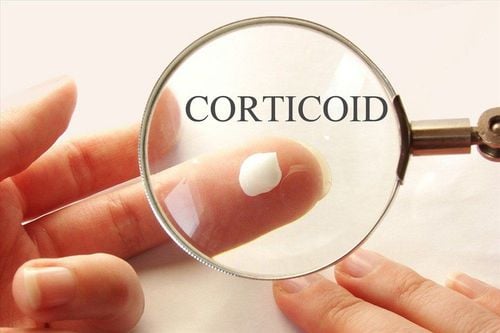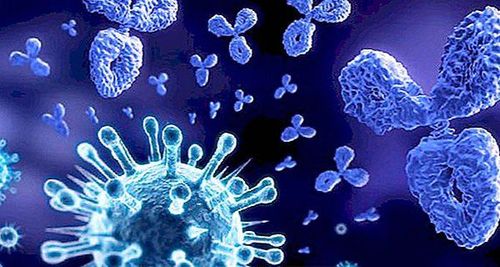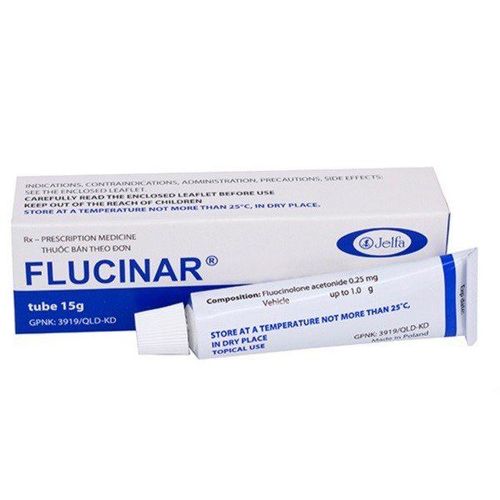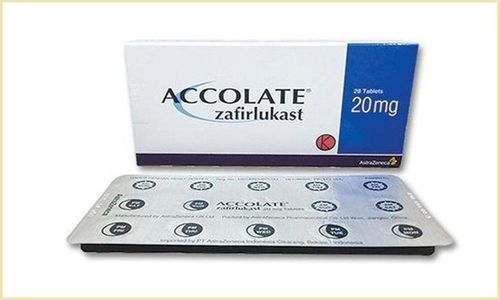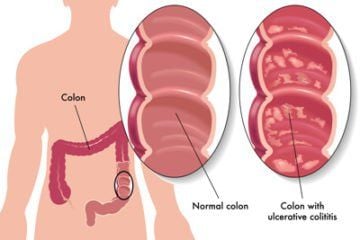This is an automatically translated article.
Atopic dermatitis is a dermatological disease that forms when the body is exposed to all kinds of allergens from the outside environment. Atopic dermatitis is a chronic disease, has many different degrees and if left untreated, can progress from mild symptoms to more severe symptoms. So how to treat atopic dermatitis?
1. Overview of atopic dermatitis
In the list of common dermatological diseases, contact allergic dermatitis cannot be missing. The rate of people suffering from this disease is relatively high and tends to increase due to the appearance of more and more different causes. Most people with the disease show signs of skin allergy after being exposed to agents containing ingredients that trigger an allergic reaction to the skin... Therefore, people with sensitive skin, especially Especially in the skin, it is necessary to be careful and note this issue and limit the contact as much as possible.
Atopic dermatitis will have many different degrees and most of the time it is not too dangerous, but it makes the sufferer a lot of discomfort, especially the unsightly appearance and loss of confidence in daily life. day.
In atopic dermatitis, patients often have typical signs and symptoms such as uncomfortable itching, red spots on the surface of the skin and more widespread when scratching or touching. In some severe cases, blisters may also appear ..
However, in general, the symptoms of atopic dermatitis are usually localized to the area where the skin has been exposed to the allergen instead of the skin. Symptoms spread throughout the body like other allergic diseases. In particular, the higher the level of exposure, the more severe the symptoms will be.
2. Symptoms of atopic dermatitis
To effectively treat atopic dermatitis, sufferers need to first identify the signs and symptoms of this dermatological disease. In which, the typical symptoms are as follows:
Itchy skin, especially at night; skin rashes or patches of dark skin in areas such as hands, feet, neck, chest, eyelids, or skin folds; Small papules or tiny blisters; The skin becomes thicker and drier, sometimes flaking occurs; Already sensitive skin will be even more sensitive when the above symptoms are present. In some cases, there may be swelling when the patient scratches a lot due to itching; Severe atopic dermatitis can cause some systemic reactions such as fever, fatigue, loss of appetite...

Bệnh viêm da dị ứng xuất hiện với triệu chứng da nổi mẩn đỏ
3. Subjects prone to atopic dermatitis
Atopic dermatitis is a disease that can occur in all ages and all subjects. In which, infants or young children are more common.
In infants : Atopic dermatitis usually begins in babies 6 to 12 weeks old. The symptoms usually appear around the cheeks and chin as a rash, which makes the baby's face appear patchy and is quite likely to progress to redness, flaking, or discharge. As children get older, become more flexible and begin to crawl, areas of the skin that have a lot of contact with the floor such as knees and elbows can be affected. Atopic dermatitis in babies usually improves by 18 months of age; In children: Atopic dermatitis rash tends to appear on the skin behind the knees, inside the elbows, on the wrists, hands, sides of the neck, or on the ankles. In addition, some cases of atopic dermatitis occur in the skin around the lips, when the baby licks continuously, it will form small cracks and cause more pain; Adults: Atopic dermatitis in adults most commonly occurs on the skin of the hands or feet, resulting in dry, itchy, red, and cracked skin. Although the level of danger is not high, this disease greatly affects the quality of life, causing reduced sleep quality and work performance. At the same time, prolonged use of drugs for atopic dermatitis can lead to drug-related complications.
4. How to treat atopic dermatitis?
As the information mentioned above, atopic dermatitis is a dermatological disease that causes the sufferer to feel itchy, uncomfortable and unsightly to the damaged skin. Therefore, patients are especially interested in the treatment regimen of atopic dermatitis, and at the same time find ways to limit the disease from progressing to the chronic stage. Usually, the treatment time for atopic dermatitis usually lasts about 2-4 weeks, but in cases of severe skin damage, the treatment time may take longer.
Based on the symptoms and severity of the disease, the doctor will give the most appropriate and effective treatment plan for atopic dermatitis:
In the case of mild atopic dermatitis, the doctor usually only asks the patient to use mild skin care products to control symptoms; In case of moderate or higher severity, the drug often prescribed by doctors to treat atopic dermatitis is corticosteroids, topical or oral. In particular, oral corticosteroids are often more effective because of their stronger activity and are preferred for severe cases. Note, patients treated with corticosteroids must follow the instructions and dosage prescribed by the doctor, absolutely do not arbitrarily use without indication. In addition, the treatment regimen for atopic dermatitis may also include drugs such as Calcineurin, Doxepin, topical antibiotics (when there is a bacterial superinfection), the use of UV rays, antihistamines or antibiotics. systemic when severe superinfection cannot be controlled with topical antibiotics.
Because it is an allergic disease, some people with atopic dermatitis can use oral immunosuppressive drugs besides corticosteroids such as Cyclosporine A, Azathioprine or can treat desensitization to allergens. when atopic dermatitis is co-existing with bronchial asthma, allergic rhinitis. In severe cases that cannot be controlled with a single drug, the doctor will prescribe a combination therapy of the above drugs to treat atopic dermatitis.
During the treatment of atopic dermatitis, the patient should try as much as possible not to expose the skin to irritants to control symptoms more effectively. In addition, patients are advised not to scratch or touch the rash to prevent the risk of superinfection or more serious skin irritation. Instead, the patient can use a cotton pad soaked in clean water to gently clean the damaged skin. This method can improve and ease symptoms caused by atopic dermatitis.
If you follow the correct treatment regimen and doctor's instructions, the condition of atopic dermatitis will quickly improve, and at the same time, it will not leave scars or red spots that cause unsightly skin problems. However, the treatment of atopic dermatitis has so far faced many difficulties, requiring a combination of many different methods, of which equally important is the treatment adherence and understanding of the patient and family. patients about this disease for the most effective control.

Người bệnh nên tuân thủ phác đồ chữa bệnh viêm da dị ứng của bác sĩ
5. Prevention of atopic dermatitis
One of the effective prevention of atopic dermatitis that few people pay attention to is nutrition. Patients with the disease need to be provided with all the necessary nutrients for the body, balanced nutrition in the meals so that the body can absorb it properly and effectively. Among the nutrients, priority should be given to the addition of vitamins, fiber, minerals... in vegetables and fruits because they are important components in the process of skin cell regeneration and improvement of allergies. effective effect.
At the same time, the diet should avoid foods that can increase the level of allergies such as seafood, peanuts, cow's milk... Although they provide many beneficial nutrients for the body, the ingredients are not. contain substances that can cause allergies and increase the severity of atopic dermatitis, especially in people with a predisposition to allergies, a history of food allergies.
Increase water intake every day to support metabolic processes in the body. Limit harmful drinks such as alcohol, stimulant drinks because both harmful to overall health and increase the possibility of allergies.
Clean the allergic skin area, minimize contact with allergens, dust, polluted environment... When it is necessary to go outdoors, it is necessary to apply preventive measures to protect the skin from harmful effects. In addition, people with atopic dermatitis need to limit bathing in water that is too hot or too cold, instead use warm enough water to protect the skin from being too dry.
During the treatment of atopic dermatitis, if there are abnormal signs on the patient's skin, it is necessary to promptly notify the doctor. Absolutely do not arbitrarily change the treatment regimen because it will make the disease worse and may cause dangerous complications.
Follow Vinmec International General Hospital website to get more health, nutrition and beauty information to protect the health of yourself and your loved ones in your family.
Please dial HOTLINE for more information or register for an appointment HERE. Download MyVinmec app to make appointments faster and to manage your bookings easily.




